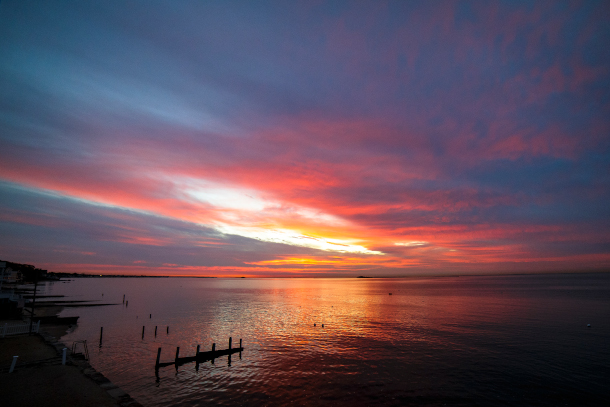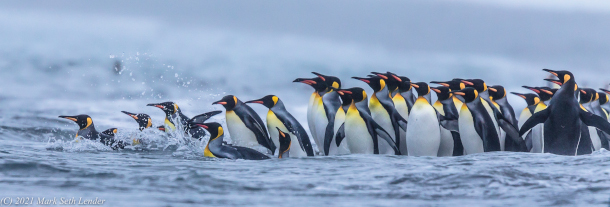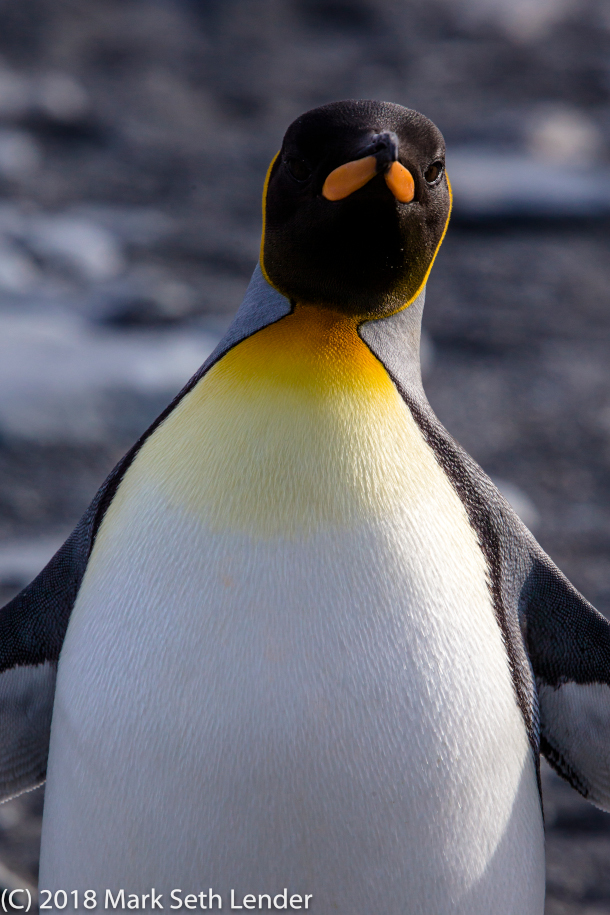Saved By the Natural World
Air Date: Week of July 8, 2022
Living on Earth’s Explorer-in-Residence Mark Seth Lender reflects on how he and his wife Valerie have felt saved by their connection to nature during the COVID-19 pandemic.
Transcript
BASCOMB: It’s Living on Earth, I’m Bobby Bascomb
CURWOOD: And I’m Steve Curwood.
Public lands are great places to get out and about as the Coronavirus has meant a lot of isolation.
And nature anywhere helps sanity in these times, says Living on Earth’s Explorer in Residence Mark Seth Lender.
LENDER: What has saved us, Valerie and me, is the Natural World.
We are prisoners in our own home. No one comes. We avoid peopled spaces. Even on our long daily walk we wave from a distance and cross the street. Everyone does. We speak to the mailman through masks. The doctor visits are by phone.
But then all the gulls fly out over the water calling in alarm, the mallards rise up and the fish crows and mourning doves scatter in all directions. Eagle! Powering down the shoreline with a huge fish in her talons, her great wings deceptively slow, the speed incredible, all the wildlife in a rush to get out of her way. Or one of us hollers, “Come quick!” Because the thinnest eyelid of a New Moon has broken through the clouds, vanishing, appearing again and in an instant, gone. Sunsets. Blue-black night. The pinpoint light of stars and a penetrating cold.
We let go. All the unremarked tension of the day lets go. We heal.

Sunset (Photo: © Mark Seth Lender)
Yes, we live in a privileged place but anyone can look up at the sky. Even a prisoner has the free and open space above the prison yard. High above a herring gull crosses over. We ignore the gulls because they are common. Remember then what we so readily forget, that this is a wild animal! Or on your hurried way look east towards where the sun comes up if only for a moment, even if all you can see is the glow. And at the end of an exhausting day turn your head west where all the changing colors linger before they fade. Maybe if you are very lucky (and why not?) low on the horizon will be a V-shaped form, geese like you, heading home.
What else is there to save us? What else to preserve our sanity in the face of all this terror?
BASCOMB: That’s Living on Earth’s Explorer in Residence, Mark Seth Lender.
Links
Thanks to Destination Wildlife
Stewart B. McKinney National Wildlife Refuge 50th Anniversary event, July 23, 2022
Living on Earth wants to hear from you!
Living on Earth
62 Calef Highway, Suite 212
Lee, NH 03861
Telephone: 617-287-4121
E-mail: comments@loe.org
Newsletter [Click here]
Donate to Living on Earth!
Living on Earth is an independent media program and relies entirely on contributions from listeners and institutions supporting public service. Please donate now to preserve an independent environmental voice.
NewsletterLiving on Earth offers a weekly delivery of the show's rundown to your mailbox. Sign up for our newsletter today!
 Sailors For The Sea: Be the change you want to sea.
Sailors For The Sea: Be the change you want to sea.
 Creating positive outcomes for future generations.
Creating positive outcomes for future generations.
 Innovating to make the world a better, more sustainable place to live. Listen to the race to 9 billion
Innovating to make the world a better, more sustainable place to live. Listen to the race to 9 billion
 The Grantham Foundation for the Protection of the Environment: Committed to protecting and improving the health of the global environment.
The Grantham Foundation for the Protection of the Environment: Committed to protecting and improving the health of the global environment.
 Contribute to Living on Earth and receive, as our gift to you, an archival print of one of Mark Seth Lender's extraordinary wildlife photographs. Follow the link to see Mark's current collection of photographs.
Contribute to Living on Earth and receive, as our gift to you, an archival print of one of Mark Seth Lender's extraordinary wildlife photographs. Follow the link to see Mark's current collection of photographs.
 Buy a signed copy of Mark Seth Lender's book Smeagull the Seagull & support Living on Earth
Buy a signed copy of Mark Seth Lender's book Smeagull the Seagull & support Living on Earth
Living on Earth’s Explorer-in-Residence Mark Seth Lender reflects on how he and his wife Valerie have felt saved by their connection to nature during the COVID-19 pandemic.
Transcript
BASCOMB: It’s Living on Earth, I’m Bobby Bascomb
CURWOOD: And I’m Steve Curwood.
Public lands are great places to get out and about as the Coronavirus has meant a lot of isolation.
And nature anywhere helps sanity in these times, says Living on Earth’s Explorer in Residence Mark Seth Lender.
LENDER: What has saved us, Valerie and me, is the Natural World.
We are prisoners in our own home. No one comes. We avoid peopled spaces. Even on our long daily walk we wave from a distance and cross the street. Everyone does. We speak to the mailman through masks. The doctor visits are by phone.
But then all the gulls fly out over the water calling in alarm, the mallards rise up and the fish crows and mourning doves scatter in all directions. Eagle! Powering down the shoreline with a huge fish in her talons, her great wings deceptively slow, the speed incredible, all the wildlife in a rush to get out of her way. Or one of us hollers, “Come quick!” Because the thinnest eyelid of a New Moon has broken through the clouds, vanishing, appearing again and in an instant, gone. Sunsets. Blue-black night. The pinpoint light of stars and a penetrating cold.
We let go. All the unremarked tension of the day lets go. We heal.

Sunset (Photo: © Mark Seth Lender)
Yes, we live in a privileged place but anyone can look up at the sky. Even a prisoner has the free and open space above the prison yard. High above a herring gull crosses over. We ignore the gulls because they are common. Remember then what we so readily forget, that this is a wild animal! Or on your hurried way look east towards where the sun comes up if only for a moment, even if all you can see is the glow. And at the end of an exhausting day turn your head west where all the changing colors linger before they fade. Maybe if you are very lucky (and why not?) low on the horizon will be a V-shaped form, geese like you, heading home.
What else is there to save us? What else to preserve our sanity in the face of all this terror?
BASCOMB: That’s Living on Earth’s Explorer in Residence, Mark Seth Lender.
Links
Thanks to Destination Wildlife
Stewart B. McKinney National Wildlife Refuge 50th Anniversary event, July 23, 2022
Living on Earth wants to hear from you!
Living on Earth
62 Calef Highway, Suite 212
Lee, NH 03861
Telephone: 617-287-4121
E-mail: comments@loe.org
Newsletter [Click here]
Donate to Living on Earth!
Living on Earth is an independent media program and relies entirely on contributions from listeners and institutions supporting public service. Please donate now to preserve an independent environmental voice.
NewsletterLiving on Earth offers a weekly delivery of the show's rundown to your mailbox. Sign up for our newsletter today!
 Sailors For The Sea: Be the change you want to sea.
Sailors For The Sea: Be the change you want to sea.
 Creating positive outcomes for future generations.
Creating positive outcomes for future generations.
 Innovating to make the world a better, more sustainable place to live. Listen to the race to 9 billion
Innovating to make the world a better, more sustainable place to live. Listen to the race to 9 billion
 The Grantham Foundation for the Protection of the Environment: Committed to protecting and improving the health of the global environment.
The Grantham Foundation for the Protection of the Environment: Committed to protecting and improving the health of the global environment.
 Contribute to Living on Earth and receive, as our gift to you, an archival print of one of Mark Seth Lender's extraordinary wildlife photographs. Follow the link to see Mark's current collection of photographs.
Contribute to Living on Earth and receive, as our gift to you, an archival print of one of Mark Seth Lender's extraordinary wildlife photographs. Follow the link to see Mark's current collection of photographs.
 Buy a signed copy of Mark Seth Lender's book Smeagull the Seagull & support Living on Earth
Buy a signed copy of Mark Seth Lender's book Smeagull the Seagull & support Living on Earth













